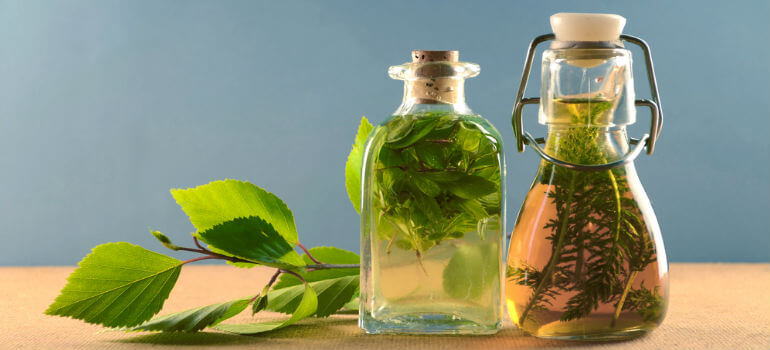
In summer, flowers bloom, birds sing and bugs bite more than in any other season. Not only that, but the sun is not especially merciful to the skin either. Insect bites, stings, and sunburn are frequently encountered problems during this season, and in most cases, they can be effectively treated at home. Therefore, to avoid an unnecessary wait in an emergency department or urgent treatment centre, it is important to know what to do if you or a family member are affected.
Generally, there are straightforward measures you can implement at home to alleviate your symptoms. However, there are times when burns, bites, and stings may require more serious attention, making it essential to know what to do and when to consult a healthcare provider.
So, if you’re looking for easy home remedies for soothing the skin after insect bites, or sunburn, you’ve come to the right place.
Table of Contents
How to Remove a Wasp, Bee or Hornet Stings
Bees, wasps, and hornets can get very aggressive in summer, and their stings are not a small matter. Therefore, knowing how to treat a sting can make a big difference in easing the pain and preventing complications.
- If the sting is still on your skin, hurry up to remove it. You can use tweezers or your fingernails.
- Make sure not to pinch it, as it might inject more venom into you.
- Clean the area using soap and water.
What Is the Best Relief for Stings?
- Vinegar – Yes, vinegar can do more than just rid your carpet of a red wine stain. It’s a common natural ingredient that relieves the swollen area. You can soak cotton in vinegar and place it on the sting area. Or, if you don’t have cotton pads nearby, just apply several drops directly to your skin.
- Garlic – This is another great natural treatment for wasp stings or bee stings. Chop one clove of the garlic and rub it on the affected area. Also, you can put a plaster on top of the garlic and leave it till the swollen spot is relieved.
- Ice – It helps decrease the swollen area from a wasp, bee or hornet sting. The cold temperature of the ice will slow down blood flow, which relieves the infected area. Just put a bag of ice (or use a bag of frozen veggies or fruit instead) on for at least 20 minutes. It should work immediately and reduce the swollen area. Make sure not to apply the ice directly to your skin, but instead, use a cloth or a towel.
How to Treat a Mosquito Bite
If you went summer camping, then mosquitoes are your number one problem. So, if you become their victim, here is how to treat mosquito bites.
- Make an oatmeal paste – All you have to do is mix oatmeal with water, and you will get your paste for mosquito treatment. Oatmeal has a very soothing effect on the skin, it cools inflammation and soothes itching. Keep it on the problematic spot for about ten minutes, and then rinse.
- Rub basil – Boil a cup of water and add dried basil leaves. After it cools down, dab the mixture with a soft piece of cloth and gently rub the problematic spot.
- Apply crushed ice – Cold temperatures reduce inflammation and numb the itchy skin. Just make sure not to keep it for too long, as it can cause some harm, too. Don’t place the ice directly on your skin, as it can irritate it even more. Put a barrier between them, like a washcloth or a plastic bag.
- Apply honey – If you didn’t know, honey is nature’s most valuable gift. Not only is it sweet and full of nutrients, but it also has anti-bacterial and anti-inflammatory properties. A drop on an itchy bite will bring all the relief you need.
- Use baking soda – The sodium bicarbonate in baking soda is often used as a mosquito bite remedy. Just make a paste by mixing some with water and apply to the bite for about 10 minutes, just like with the oatmeal paste.
Check also:
How to Treat a Flea Bite
Some well-known home remedies for flea bites are:
- Ice: as it helps for a wasp sting, ice can relieve flea bites as well. Simply apply the ice wrapped in a towel and leave the magic to happen.
- White vinegar: yes, it can temporarily relieve the affected area. Dilute equal parts of the vinegar and water. Then, you can put it in a spraying bottle and spray the bitten parts of your body, or place cotton pads soaked in the solution.
- Aloe Vera: this plant is well-known for its soothing effect. You can apply aloe vera to reduce the swelling and ease the redness.
- Rubbing alcohol: much stronger natural flea bite treatment, but the strong ingredients of the rubbing alcohol will dry the bite, which will lead to a much faster healing process.
How to Prevent Insect Bites
Generally, most insect bites or stings are not severe and typically improve within a few days. However, certain bites can transmit serious illnesses such as the Zika virus, dengue fever, Lyme disease, and malaria, lead to infections or trigger a significant allergic reaction. Therefore, it is essential to take measures to reduce the risk of bug bites.
How to Keep Bees, Hornets and Wasps Away
It’s a lot better to simply keep away from stinging insects, and that might be quite the challenge in summer. Here are a few tricks you can do.
- Don’t wear yellow clothes: It might sound strange, but wasps and hornets seem to be very attracted by the colour yellow.
- Install a fake wasp nest: Wasps and hornets are very territorial, they would never create their own nest in the area of another colony. And, the farther the nest, the farther the wasps.
- Seal waste bins: Wasps are omnivores which means they will search for any type of food. So, rubbish in your backyard can be a great place where a wasp hive can hang around. For that reason, ensure all bins are tightly closed or don’t leave them outside.
- Use smells stinging bugs don’t like: You can lure stinging insects away by presenting smells like eucalyptus, mint, and wormwood.
Check also:
Biting or Stinging Insects in the UK and How to Prevent a Bite or a Sting
How to Keep Mosquitoes Away
The best way to deal with mosquito bites is by keeping them away. Of course, that would be hard, considering you’re a mosquito’s favourite dish. To prevent insect bites you can do the following:
- Use insect repellent – to protect yourself from mosquitoes, apply an insect repellent containing 20 to 30 per cent DEET to exposed skin and clothing. It is essential to follow the instructions on the product and reapply as recommended.
- Wear protective clothes – Dress appropriately if you anticipate being outdoors at night or trekking through heavily wooded areas to minimize insect bites. Opt for long-sleeved shirts, pants, socks, and closed-toe shoes rather than sandals to cover as much exposed skin as possible.
- Use bed nets – when sleeping in areas with high insect activity, it is essential to use bed nets to safeguard against mosquitoes. Opt for a net that has been pre-treated with a pyrethroid insecticide. If the net does not extend to the ground, ensure to tuck it under the mattress for optimal protection. Avoid peak insect activity times – mosquitoes are most active at dawn and dusk, so it’s best to avoid outdoor activities during these times if possible.
- Create an unfavourable environment – clear areas around your home of stagnant water (e.g., bird baths, flower pots) to prevent mosquito breeding grounds.
You can use store-bought sprays and insect repellents, but if you’re outdoors, you can also prevent mosquito bites by creating mosquito-repellent incense.
- Choose some of the following herbs: basil, bay leaves, cedar, citronella, eucalyptus, garlic, lavender, lemongrass, mint, rosemary, and thyme. Mosquitoes hate all of them. You can either get them in the form of dried leaves or essential oils.
- Grind the herbs together. If you got all in the form of herbs, grind them all together. Do not use your hands, as some of those may cause irritation to your skin.
- Let it all dry.
- Find a safe spot and light a small fire.
- Throw the mixture over the coals. Once you can catch the smell with your nose, you can be sure it’s working. The mosquitoes won’t dare to come near you.
How to Get Rid of Fleas
- Clean regularly. It’s very important to maintain high hygiene in your house. Use a vacuum cleaner on the floors, upholstery and other furniture. Fleas can lay eggs in any small crack, so it’s important to clean every corner.
- Wash all your bedding and your pets’. Air dry it or use a high setting in the dryer. If you have a mattress cover, wash it too. If the infestation is excessive, contact a professional pest exterminator to get rid of the fleas.
- Fleas love hiding in the grass or the compost pile. So, mow the grass on a regular basis and clear the garden of compost as much as possible.
- Take care of your pet on a regular basis and check for fleas or any other signs such as pale gums, excessive scratching or fur loss. Wash and deworm them every once in a while.
Check also:
How to Get Rid of Fleas in Your House
How to Treat a Sunburn
If you have had a sunburn, you will likely experience symptoms within a few hours of sun exposure. The affected skin will appear inflamed, feel painful, and be warm to the touch. After a few days, it may begin to flake and peel.
However, there is no need to worry – when you know how to treat sunburns, you can discover a variety of methods to ease the pain. Thankfully, numerous household items are available to help relieve the burning, itching, and peeling associated with sun damage.
Here are some home remedies you can use for a sunburn.
1. Cool water
One of the quickest ways to reduce inflammation is by cooling the affected area. You can take a cool bath at home to soothe the burn and prevent it from worsening. Avoid chlorinated pools, which can irritate the skin further.
2. Oatmeal
Oatmeal has natural anti-inflammatory qualities. You can create a paste by mixing oatmeal with cold milk and applying it to your skin, or you can incorporate oatmeal into a cool bath and soak in it.
3. Lettuce
Heat the lettuce in boiling water, then remove the liquid and allow it to cool in the refrigerator. Soak cotton balls in the cooled liquid and apply them to the affected skin for soothing relief.
4. Yogurt
Yogurt is rich in beneficial enzymes and probiotics that can significantly improve skin health. Simply use plain, unflavored yoghurt and apply it to the affected sunburned areas. Allow it to remain for approximately fifteen minutes before rinsing it off with lukewarm water.
5. Honey
Honey possesses natural moisturizing, antibacterial, and anti-inflammatory properties, making it effective in reducing sunburn discomfort. To use it, apply a thin layer of honey to the affected area and allow it to remain for approximately 15 to 30 minutes before rinsing or gently wiping it away with a warm washcloth.
6. Tea bags
Chamomile tea bags can be brewed and then cooled before being applied to the sunburned area. This helps reduce redness and soothes the skin. Avoid if you have pollen allergies.
When to worry about sunburn?
There are many recipes you can find online about home remedies for sunburn. However, you have to contact your GP practice if it is a large blister or you have symptoms like weakness, dehydration, high fever, headache, confusion or nausea.
Also, if your young child or baby has a sunburn, it’s important to visit a doctor, as their skin is especially delicate.
How to prevent sunburn
Of course, the best way to protect your skin is not to get a sunburn in the first place. The sun is not an easy enemy, and to keep your skin protected, you need at least SPF 30 sun lotion, and this is something only a commercial supplier can guarantee. Keep your skin protected, and don’t forget to drink lots of water.
Conclusion
The above-mentioned natural remedies for insect bites might help but might not be useful to some extent. So if none of the home insect bite treatment solutions work for you, turn to a medical person for advice on how to relieve the affected areas.
Image source: zetat/shutterstock.com

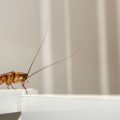



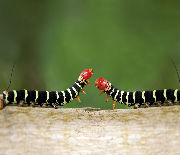
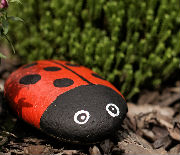
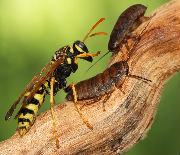
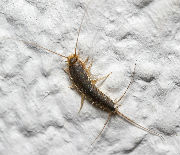
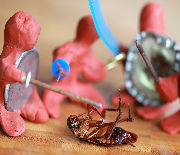
Thanks for sharing this useful information! Hope that you will continue with the kind of stuff you are doing